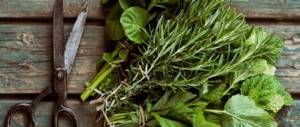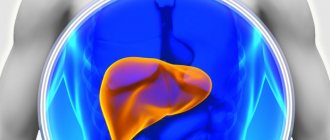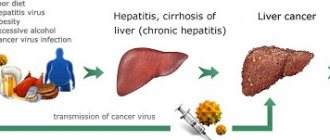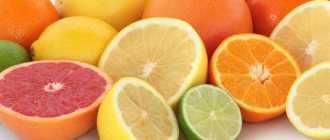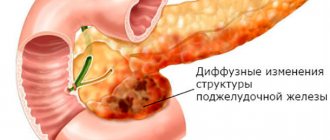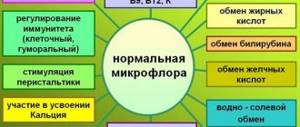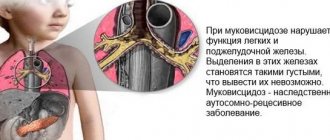General rules
Changing your diet, eating fast food that contains large quantities of fats and light carbohydrates, increasing stress load - all this serves as a background for the appearance of diseases of the gastrointestinal tract.
These diseases, to varying degrees, worsen the quality of life of patients, and it is comparable to that for diseases of the cardiovascular system. In recent years, the prevalence of these diseases has been increasing and all age groups are affected by the pathology - children and adolescents, people of working age and the elderly. During treatment, much attention is paid to dietary nutrition, the role of which is especially significant in this pathology. Table No. 5 is a universal basic diet used for diseases of the gastrointestinal tract. Varieties have been created on its basis, which makes it possible, with some correction, to use it for diseases of the liver, pancreas, gallbladder and ducts, when they are combined with colitis and gastritis , as well as after liver surgery.
The diet for diseases of the liver and pancreas should be gentle, therefore chemical and mechanical irritants are excluded or sharply limited (depending on the stage of the process). Disease of the liver and pancreas requires a diet; food intake should be small and small, and the food itself should be warm. Eating cold or hot foods is not allowed.
The general principles of nutrition for the pathology of these organs are:
- Exclusion from the diet of strong chemical irritants: essential oils of plants (onion, garlic, celery, radish, radish) and extractive substances (broths), dried and smoked foods, fried foods. To extract extractive substances, which is especially important for pancreatitis , the meat is boiled in small pieces, draining the water, and only then used as a semi-finished product for various dishes.
- Elimination of mechanical irritants in the form of coarse meats, fresh vegetables with coarse fiber and unprocessed foods.
- Eliminate the frying method when cooking. Dishes are prepared boiled or steamed. Baking without a crust is possible only with liver diseases in remission.
- A reduced amount of fats (refractory and poorly digestible ones are limited), vegetable oils are introduced, but in limited quantities for pancreatitis and calculous cholecystitis.
- Limiting foods rich in purines: animal liver, meat of young animals and birds, yeast, sardines, tuna, sprats, herring, salmon caviar, salmon, shrimp, mussels, squid, dried porcini mushrooms, smoked eel.
- Limiting table salt (up to 6 g) and egg yolks.
- Introduction of lipotropic substances that protect the liver from fatty degeneration. They are found in beef, lean fish, low-fat cottage cheese, seafood, whey, buttermilk, buckwheat and soy flour.
- Small meals with frequent meals. This promotes the regular flow of bile and pancreatic enzymes.
- Dishes are wiped or chopped during an exacerbation and in cases of severe inflammation.
During an exacerbation, nutrition should create maximum peace and help eliminate pain, so food is given pureed and liquid. The principle of small and frequent meals must also be observed, this is especially important for pancreatitis, when meals reach up to 8 times a day in small portions (50-100 g each).
For this disease, a low-calorie diet containing 60 g of protein and 50 g of fat is first prescribed. The diet consists of boiled foods of a semi-liquid consistency and mainly carbohydrate foods (decoctions of cereals, weak tea with sugar, pureed liquid porridges, pureed compotes, crackers, jelly and jelly with xylitol).
Protein products are gradually introduced: curd puddings, calcined cottage cheese in the form of paste, steamed omelet from 1-2 eggs, cream soup from boiled meat, meat and fish soufflé, steamed cutlets from lean meat. If well tolerated, add butter, pureed vegetable soups and vegetable puree (potato, carrot, beetroot). All dishes are prepared boiled or steamed. At first they are thoroughly wiped, and then crushed.
Nutrition during the acute period of liver disease is organized within Table No. 5A , and it is more varied than during exacerbation of pancreatitis:
- Steamed dishes made from twisted meat and lean fish.
- Puree or chopped boiled vegetables (potatoes, pumpkin, carrots, cauliflower and beets).
- Reduced amount of refractory fats and salt.
- Soups made with vegetable broths with pureed cereals and vegetables, puree soups seasoned with butter or cream.
- Porridges: semolina, buckwheat, rice, oatmeal, boiled in water and ground to a semi-liquid consistency. Vegetable oil is added to dishes if it is well tolerated.
- Bold cottage cheese, low-fat fermented milk products.
- Protein omelettes.
- Ripe, sweet fruits, baked and boiled, raw - only pureed.
During the recovery period, nutrition during the treatment of a diseased liver and pancreas is balanced and contains 90 g of proteins, 400 g of carbohydrates and fats - 80 g. However, the pathology of the pancreas requires adjustments and the nutrition of such patients is organized within Table No. 5P .
, exocrine gland insufficiency develops over time , which manifests itself in insufficient production of digestive enzymes. They are involved in the breakdown and digestion of carbohydrates, fats and proteins. Indigestion is manifested by signs of malnutrition in patients: weight loss and weight deficiency. Patients also develop undigested fat in their stool (steatorrhea).
In this regard, a complete diet is recommended, so the amount of protein is increased to 120-150 g (of which animal proteins should be 80-85%), and the fat content is reduced to 70 g and below (depending on their tolerance). Refractory fats are poorly tolerated by patients - they increase abdominal pain, cause diarrhea and support inflammation, so their amount is significantly reduced, and the diet is enriched with vegetable oils.
Simple carbohydrates are also limited. This is due to the fact that Langerhans cells , which produce insulin . Ultimately, this can lead to insulin deficiency and the development of diabetes . Limiting or eliminating easily digestible carbohydrates (confectionery, white bread, semolina, sugar and sweets, potatoes, rice and oatmeal) serves as a prevention of diabetes. Sometimes patients are recommended to use various sweeteners (saccharin or xylitol) when preparing jellies, compotes, mousses, jelly and even jam.
At the same time, correction of enzyme imbalance is carried out with the prescription of enzyme preparations. Diet and enzyme replacement therapy prevent the progression of fibrodegenerative changes in the gland, they reduce pain and correct digestive disorders.
Taking enzyme preparations and maintaining proper nutrition should continue for years. Reducing dyspeptic syndrome and stabilizing weight are not indications for discontinuing enzyme therapy, since most patients, even with normal weight, have a nutritional disorder, as well as micronutrient deficiency.
The diet uses foods that inhibit pancreatic enzymes: egg whites, potatoes, soybeans, oatmeal. The amount of fat is increased gradually from 50 g to 70 g, observing their tolerance. You should not consume foods with a juice effect: any broths, fried foods and alcoholic beverages.
The list of products expands during the period of remission, when the inclusion of raw vegetables and fruits is allowed. Soups can be consumed raw, and new first courses can be carefully introduced into the diet: beetroot soup, borscht and cabbage soup. The following remain contraindicated: coffee, cocoa and carbonated drinks.
Fasting days are indicated for many diseases, including pancreatitis .
This kind of mono-diet allows the gastrointestinal tract to work in a gentle manner. Since fasting diets are deficient in chemical composition, they can be prescribed only for 1 day and once a week or less often for patients with pancreatitis with low nutrition. The most acceptable fasting days for these diseases are: oatmeal, cottage cheese, curd and fruit, rice and compote, watermelon, juice, pumpkin.
Dish recipes
Since dietary nutrition for the restoration of the organs in question involves the consumption of only certain foods, it will be useful to familiarize yourself with several recipes that allow you to add variety to your daily diet.
As long as there are no unpleasant symptoms of pathological processes, these recipes will not make you feel worse and will not aggravate inflammation.
Pumpkin and oatmeal soup
To prepare the food in question you will need:
- 100 g pumpkin;
- 2 tbsp. l. oatmeal;
- half a teaspoon of butter.
The pumpkin is cut into cubes, boiled until half cooked, transferred to a frying pan, mixed with oatmeal, butter and pumpkin broth.
The mass is covered with a lid and simmered over low heat for half an hour, then pumpkin decoction and sugar are added. The dish is ready to eat.
Buckwheat soup
To prepare the soup you will need: 100 g of water, 50 g of buckwheat, 400 g of milk, a little sugar.
Cooking process:
- water is boiling;
- cereal is thrown at it;
- cook for a quarter of an hour;
- milk with sugar is added;
- everything gets mixed up.
The dish can be served to the table.
Egg white sponge cake
The biscuit is prepared as follows:
- Beat 6 egg whites with sugar (one-third of a glass);
- add a glass of crushed white bread crackers to the finished mass;
- pour half of the finished mass into a greased mold, sprinkle poppy seeds on top, then add 2 half;
- bake until fully cooked at 180 degrees.
The biscuit is ready to eat.
Carrot salad
To prepare it you will need the following ingredients: 4 carrots, 2 apples, 100 g raisins, half a lemon, 3 tbsp. l. honey
- grate carrots and apples on a large grater;
- mix the ingredients, adding raisins;
- lemon juice is squeezed out and the salad is dressed;
- Then honey is added and everything is mixed.
Fish with garnish
To prepare the dish you will need: 1 perch, 150 g of rice, 3 carrots, a pinch of herbs and salt.
- fish is cleaned and washed;
- cook over low heat, add a pinch of salt;
- rice and carrots are cooked;
- Each component is laid out on a plate.
The dish is ready to eat.
Curd soufflé with fruits
To prepare cottage cheese soufflé with fruit you will need: 0.25 kg of cottage cheese, 100 g of apple, raspberry, strawberry, banana and peach, 1 tsp. honey The cooking process is as follows:
- cottage cheese is whipped in a blender;
- the fruits are crushed and the curd mass is added;
- add honey and mix thoroughly;
- Place the finished mixture in the microwave for 5 minutes.
The dish is taken out and allowed to cool, after which it is ready to eat.
With the least pathological process in the liver and pancreas, the human body is at risk.
Therefore, if various diseases occur in the organs in question, it is necessary to begin therapy without delay.
Diet therapy can help with this, requiring a correct diet. Dietary nutrition for diseases of the liver and pancreas involves certain restrictions.
There are a large number of recipes that use simple products that are acceptable for pathological processes in the organs in question.
However, their selection should be carried out individually by a nutritionist or gastroenterologist, taking into account the pathology.
To prevent adverse consequences, it is necessary to follow medical instructions and not self-medicate.
Authorized Products
Diet for liver and pancreas disease includes:
- Soups in vegetable broths with vegetables (in case of exacerbation - ground). Cereal soups are well boiled or kneaded, seasoned with sour cream, butter or cream. The most acceptable for these diseases are puree soups.
- Boiled and grated (in case of exacerbation) potatoes, pumpkin, zucchini, carrots, cauliflower, beets, green peas. After a while, the consumption of finely chopped boiled vegetables is allowed, and during the period of remission - raw (grated carrots, cucumbers and pumpkin, peeled tomatoes).
- Porridge with water: semolina, oatmeal, buckwheat, rice. Pearl barley, corn, millet and barley are limited. Porridges are well boiled or ground, and also prepared from flour (buckwheat, oatmeal, rice) with the addition of milk. You can make a soufflé from cereals, pouring jelly or jam.
- Lean chicken, beef, veal or rabbit. Boiled chicken and rabbit are consumed in pieces; other types of meat are prepared in the form of chopped, steamed products.
- Low-fat fish (pike perch, hake, cod, pollock, perch, carp, pike, whiting), steamed - in pieces or in the form of cutlets. For pancreatitis, stewed and poached fish is not allowed, as it contains a large amount of extractive substances.
- Low-fat fermented milk products. Sour cream and milk are allowed as additives in dishes, since whole milk is poorly tolerated. You can include mild grated cheese, low-fat cottage cheese and dishes made from it in your diet. In case of calcium deficiency, which is observed in patients with pancreatitis, it is better to consume calcined cottage cheese.
- Wheat bread, dried or crackers. It is possible to eat unsweetened cookies.
- White omelettes from 1-2 eggs daily.
- Vegetable-based sauces that diversify your diet. They are prepared on the basis of unfried flour with the addition of sour cream or milk.
- Baked sweet apples and pears and pureed dried fruits. Jams, jelly, mousses and natural marshmallows prepared with xylitol. Mashed raw fruits are allowed to a limited extent.
- For liver diseases, the list of fruits is wider - all ripe fruits (except sour varieties) are allowed, baked and raw.
Table of permitted products
| Proteins, g | Fats, g | Carbohydrates, g | Calories, kcal | |
Vegetables and greens | ||||
| eggplant | 1,2 | 0,1 | 4,5 | 24 |
| zucchini | 0,6 | 0,3 | 4,6 | 24 |
| cabbage | 1,8 | 0,1 | 4,7 | 27 |
| broccoli | 3,0 | 0,4 | 5,2 | 28 |
| carrot | 1,3 | 0,1 | 6,9 | 32 |
| cucumbers | 0,8 | 0,1 | 2,8 | 15 |
| parsley | 3,7 | 0,4 | 7,6 | 47 |
| tomatoes | 0,6 | 0,2 | 4,2 | 20 |
| pumpkin | 1,3 | 0,3 | 7,7 | 28 |
| dill | 2,5 | 0,5 | 6,3 | 38 |
Fruits | ||||
| bananas | 1,5 | 0,2 | 21,8 | 95 |
| pears | 0,4 | 0,3 | 10,9 | 42 |
| apples | 0,4 | 0,4 | 9,8 | 47 |
Nuts and dried fruits | ||||
| raisin | 2,9 | 0,6 | 66,0 | 264 |
| dried figs | 3,1 | 0,8 | 57,9 | 257 |
| dried apricots | 5,2 | 0,3 | 51,0 | 215 |
| dried apricots | 5,0 | 0,4 | 50,6 | 213 |
| prunes | 2,3 | 0,7 | 57,5 | 231 |
Cereals and porridges | ||||
| buckwheat (kernel) | 12,6 | 3,3 | 62,1 | 313 |
| oat groats | 12,3 | 6,1 | 59,5 | 342 |
| rice | 6,7 | 0,7 | 78,9 | 344 |
Flour and pasta | ||||
| pasta | 10,4 | 1,1 | 69,7 | 337 |
| noodles | 12,0 | 3,7 | 60,1 | 322 |
| buckwheat noodles | 14,7 | 0,9 | 70,5 | 348 |
Bakery products | ||||
| bran bread | 7,5 | 1,3 | 45,2 | 227 |
| whole grain bread | 10,1 | 2,3 | 57,1 | 295 |
Confectionery | ||||
| jam | 0,3 | 0,2 | 63,0 | 263 |
| jelly | 2,7 | 0,0 | 17,9 | 79 |
| marshmallows | 0,8 | 0,0 | 78,5 | 304 |
| fruit and berry marmalade | 0,4 | 0,0 | 76,6 | 293 |
| paste | 0,5 | 0,0 | 80,8 | 310 |
| Maria cookies | 8,7 | 8,8 | 70,9 | 400 |
Raw materials and seasonings | ||||
| honey | 0,8 | 0,0 | 81,5 | 329 |
| sugar | 0,0 | 0,0 | 99,7 | 398 |
Dairy | ||||
| kefir 1.5% | 3,3 | 1,5 | 3,6 | 41 |
| Ryazhenka | 2,8 | 4,0 | 4,2 | 67 |
Cheeses and cottage cheese | ||||
| cottage cheese 1% | 16,3 | 1,0 | 1,3 | 79 |
Meat products | ||||
| beef | 18,9 | 19,4 | 0,0 | 187 |
| rabbit | 21,0 | 8,0 | 0,0 | 156 |
Bird | ||||
| boiled chicken breast | 29,8 | 1,8 | 0,5 | 137 |
| boiled chicken drumstick | 27,0 | 5,6 | 0,0 | 158 |
| boiled turkey fillet | 25,0 | 1,0 | — | 130 |
Eggs | ||||
| soft-boiled chicken eggs | 12,8 | 11,6 | 0,8 | 159 |
Fish and seafood | ||||
| flounder | 16,5 | 1,8 | 0,0 | 83 |
| pollock | 15,9 | 0,9 | 0,0 | 72 |
| cod | 17,7 | 0,7 | — | 78 |
| hake | 16,6 | 2,2 | 0,0 | 86 |
Oils and fats | ||||
| butter | 0,5 | 82,5 | 0,8 | 748 |
| olive oil | 0,0 | 99,8 | 0,0 | 898 |
| sunflower oil | 0,0 | 99,9 | 0,0 | 899 |
Non-alcoholic drinks | ||||
| water | 0,0 | 0,0 | 0,0 | — |
| mineral water | 0,0 | 0,0 | 0,0 | — |
| green tea | 0,0 | 0,0 | 0,0 | — |
Juices and compotes | ||||
| apricot juice | 0,9 | 0,1 | 9,0 | 38 |
| carrot juice | 1,1 | 0,1 | 6,4 | 28 |
| peach juice | 0,9 | 0,1 | 9,5 | 40 |
| plum juice | 0,8 | 0,0 | 9,6 | 39 |
| tomato juice | 1,1 | 0,2 | 3,8 | 21 |
| pumpkin juice | 0,0 | 0,0 | 9,0 | 38 |
| rose hip juice | 0,1 | 0,0 | 17,6 | 70 |
| * data is per 100 g of product | ||||
Who needs dietary nutrition
The liver, together with the pancreas, participates in the processes of digesting food, producing digestive secretions - bile and pancreatic juice. Disturbances in the functioning of these organs are accompanied by similar symptoms:
- weakness is felt, performance decreases;
- intestinal function is disrupted;
- nausea and belching appear;
- appetite worsens;
- possible bloating;
- dull pain occurs in the right hypochondrium or epigastric region.
Any of these signs is grounds for contacting a gastroenterologist. Without waiting for the results of the examination, they switch to a gentle diet: reduce the consumption of fats and simple carbohydrates, eliminate fried foods, spicy foods, and alcohol.
The liver and pancreas diet (table No. 5), prescribed by a doctor, is used for the following pathologies:
- hepatitis of any origin;
- fatty hepatosis and pancreatic steatosis;
- cholecystitis;
- hepatic cirrhosis;
- pancreatitis.
The basis of therapeutic nutrition are products and dishes that reduce the load on the digestive organs and relieve intoxication.
For example, a diet for fatty liver is aimed at normalizing lipid metabolism and removing excess cholesterol.
Fully or partially limited products
The following are excluded from the diet of patients:
- Broth-based soups, borscht, okroshka, beetroot soup, cabbage soup. The latter dishes can be carefully introduced into the diet for liver diseases.
- Coarse vegetables (white cabbage, rutabaga, radishes, turnips, eggplants, radishes), mushrooms in any form, legumes, pickled products.
- Fatty fish and meat, cooking fats, lard, goose and duck meat, stewed meat and fish, any fried foods, smoked meats, salted fish, fish roe, all sausages, canned food.
- Offal.
- Rye bread and any fresh bread, yeast baked goods, fried cheesecakes and pancakes, confectionery, puff pastry, pancakes.
- Cereals: pearl barley, corn, millet and barley are not indicated for pancreatitis. For other diseases they can be used if well tolerated.
- Raw vegetables and fruits during an exacerbation period are then introduced into the diet with caution.
- Vegetables with coarse fiber are excluded (bell peppers, radishes, horseradish, overripe peas, radishes, onions, garlic).
- Black strong coffee, grape juice, chocolate, ice cream, cocoa, jam, carbonated drinks.
- High-fat cottage cheese with high acidity, fried eggs, cream, full-fat milk, sharp cheese.
- Acidic fruits and berries (apples, cherries, cranberries) and fruits containing a lot of carbohydrates (grapes, dates, bananas), as they cause bloating and adversely affect carbohydrate metabolism.
- Seasonings and spices, horseradish, ketchup, mustard, herbs, pepper, mayonnaise.
- Alcohol.
Table of prohibited products
| Proteins, g | Fats, g | Carbohydrates, g | Calories, kcal | |
Vegetables and greens | ||||
| canned vegetables | 1,5 | 0,2 | 5,5 | 30 |
| swede | 1,2 | 0,1 | 7,7 | 37 |
| peas | 6,0 | 0,0 | 9,0 | 60 |
| bulb onions | 1,4 | 0,0 | 10,4 | 41 |
| chickpeas | 19,0 | 6,0 | 61,0 | 364 |
| salad pepper | 1,3 | 0,0 | 5,3 | 27 |
| radish | 1,2 | 0,1 | 3,4 | 19 |
| white radish | 1,4 | 0,0 | 4,1 | 21 |
| beans | 7,8 | 0,5 | 21,5 | 123 |
| horseradish | 3,2 | 0,4 | 10,5 | 56 |
| spinach | 2,9 | 0,3 | 2,0 | 22 |
| sorrel | 1,5 | 0,3 | 2,9 | 19 |
Berries | ||||
| grape | 0,6 | 0,2 | 16,8 | 65 |
Mushrooms | ||||
| mushrooms | 3,5 | 2,0 | 2,5 | 30 |
| marinated mushrooms | 2,2 | 0,4 | 0,0 | 20 |
Nuts and dried fruits | ||||
| nuts | 15,0 | 40,0 | 20,0 | 500 |
| almond | 18,6 | 57,7 | 16,2 | 645 |
Snacks | ||||
| potato chips | 5,5 | 30,0 | 53,0 | 520 |
Cereals and porridges | ||||
| corn grits | 8,3 | 1,2 | 75,0 | 337 |
| pearl barley | 9,3 | 1,1 | 73,7 | 320 |
| barley grits | 10,4 | 1,3 | 66,3 | 324 |
Flour and pasta | ||||
| vareniki | 7,6 | 2,3 | 18,7 | 155 |
| dumplings | 11,9 | 12,4 | 29,0 | 275 |
Bakery products | ||||
| buns | 7,9 | 9,4 | 55,5 | 339 |
| Rye bread | 6,6 | 1,2 | 34,2 | 165 |
Confectionery | ||||
| pastry cream | 0,2 | 26,0 | 16,5 | 300 |
| shortbread dough | 6,5 | 21,6 | 49,9 | 403 |
Ice cream | ||||
| ice cream | 3,7 | 6,9 | 22,1 | 189 |
Chocolate | ||||
| chocolate | 5,4 | 35,3 | 56,5 | 544 |
Raw materials and seasonings | ||||
| mustard | 5,7 | 6,4 | 22,0 | 162 |
| mayonnaise | 2,4 | 67,0 | 3,9 | 627 |
Dairy | ||||
| milk 4.5% | 3,1 | 4,5 | 4,7 | 72 |
| cream 35% (fat) | 2,5 | 35,0 | 3,0 | 337 |
| whipped cream | 3,2 | 22,2 | 12,5 | 257 |
Meat products | ||||
| fatty pork | 11,4 | 49,3 | 0,0 | 489 |
| salo | 2,4 | 89,0 | 0,0 | 797 |
| bacon | 23,0 | 45,0 | 0,0 | 500 |
Sausages | ||||
| smoked sausage | 9,9 | 63,2 | 0,3 | 608 |
Bird | ||||
| smoked chicken | 27,5 | 8,2 | 0,0 | 184 |
| duck | 16,5 | 61,2 | 0,0 | 346 |
| smoked duck | 19,0 | 28,4 | 0,0 | 337 |
| goose | 16,1 | 33,3 | 0,0 | 364 |
Fish and seafood | ||||
| smoked fish | 26,8 | 9,9 | 0,0 | 196 |
| black caviar | 28,0 | 9,7 | 0,0 | 203 |
| salmon caviar granular | 32,0 | 15,0 | 0,0 | 263 |
| salmon | 19,8 | 6,3 | 0,0 | 142 |
| canned fish | 17,5 | 2,0 | 0,0 | 88 |
| salmon | 21,6 | 6,0 | — | 140 |
| trout | 19,2 | 2,1 | — | 97 |
Oils and fats | ||||
| animal fat | 0,0 | 99,7 | 0,0 | 897 |
| cooking fat | 0,0 | 99,7 | 0,0 | 897 |
Alcoholic drinks | ||||
| dry red wine | 0,2 | 0,0 | 0,3 | 68 |
| vodka | 0,0 | 0,0 | 0,1 | 235 |
| beer | 0,3 | 0,0 | 4,6 | 42 |
Non-alcoholic drinks | ||||
| soda water | 0,0 | 0,0 | 0,0 | — |
| cola | 0,0 | 0,0 | 10,4 | 42 |
| instant coffee dry | 15,0 | 3,5 | 0,0 | 94 |
| sprite | 0,1 | 0,0 | 7,0 | 29 |
| * data is per 100 g of product | ||||
Pancreatitis
The next disease that can be caused by eating unhealthy foods relates specifically to the pancreas. Pancreatitis has both mild and acute forms , which are difficult to tolerate.
Symptoms of pancreatitis can often be confused with primitive poisoning:
- the body has a fever;
- nausea;
- loose stools or, conversely, constipation;
- vomiting, which is not able to relieve the pancreas and well-being;
- constant aching pain in the area of the gland.
Unfortunately for patients, they often confuse their illness with poisoning and do not take any serious treatment measures. However, pancreatitis can only be confused with poisoning if its form is mild.
The fact is that in the acute form of the disease, all the symptoms listed above take on a very severe nature , which is simply impossible to tolerate. That is why in such cases the patient, fortunately, always turns to a specialist on time.
Without modern medical intervention during the course of the disease, it can develop into a more severe one, which will lead to the spread of the virus not only in the pancreas, but also in other organs of the body. In such cases, without the timely intervention of doctors and urgent hospitalization of the patient, death can occur.
If a person suffers from a chronic form of the disease, as in the case of the liver, he may not even realize it until the diet is disrupted. As soon as a product that is incompatible with the disease has been consumed, its acute form is immediately observed, accompanied by bloating .
Menu (Power Mode)
During the period of remission, the patient’s diet is quite varied, but you only need to follow the permitted cooking methods. Cereal casseroles, boiled pasta and cereal soufflés are added to the diet. At the same time, limit the consumption of crumbly cereals. Small amounts of butter are added to prepared dishes.
The list of vegetables has also been expanded and includes cauliflower, beets, pumpkin, and green peas, from which you can prepare a variety of dishes. It is better for patients to eat low-fat unleavened cottage cheese, which is prepared with the addition of calcium chloride. In addition to the sweetish, fresh taste, it contains an increased amount of calcium. Souffles and steam puddings are made on its basis.
| Breakfast |
|
| Lunch |
|
| Dinner |
|
| Afternoon snack |
|
| Dinner |
|
| For the night |
|
| Breakfast |
|
| Lunch |
|
| Dinner |
|
| Afternoon snack |
|
| Dinner |
|
| For the night |
|
| Breakfast |
|
| Lunch |
|
| Dinner |
|
| Afternoon snack |
|
| Dinner |
|
| For the night |
|
Proper nutrition for liver diseases
The liver, in addition to its digestive function, also serves as a kind of barrier, cleansing the body of harmful substances. Naturally, if this organ suffers, the filtering function of the liver will be damaged, and taking medications will not bring the desired effect. To restore the normal functioning of the organ, the patient’s nutrition must be correct and balanced. Spicy, salty and fried foods should be excluded from the diet. Products should be consumed only after thorough steam treatment. For better absorption of nutrients, you need to eat in small portions.
To normalize liver function, you need to consume only healthy foods enriched with fiber. The diet should contain:
- carrots, beets, cabbage, cucumbers, tomatoes, greens;
- cottage cheese, lactic acid products, fresh cheeses;
- animal liver;
- lean meat and fish - beef, chicken, turkey, haddock, cod;
- oatmeal, buckwheat, cereals;
- dried apricots, prunes, raisins, any dried fruits;
- bananas, persimmons, apples, peaches:
- It is better to use honey instead of sweets;
- you should drink more clean water;
- green tea, fruit compote, rosehip decoction.
While adhering to proper nutrition, the patient should exclude the following foods from his diet:
- sausage;
- smoked meats;
- semi-finished products;
- baked goods, bread, pasta made from soft wheat varieties;
- coffee, soda, alcohol, strong tea;
- spicy seasonings;
- salinity;
- canned foods.
Reviews and results
Constant adherence to a therapeutic diet is important for combined pathologies of the gastrointestinal tract, since this is required by their state of health. Patients notice that expanding their diet inevitably leads to deterioration. If the diet is followed, there is a rapid regression of symptoms. Reviews note the need for constant adherence to therapeutic nutrition and this causes difficulties, since it is necessary to prepare food individually.
- “... In addition to pancreatitis, an ultrasound scan revealed cholecystitis and gallstones. There was an exacerbation and I had to stay in the hospital. There is no need to remove the gallbladder yet, but you will have to follow the diet constantly. I strictly follow all nutrition recommendations. I switched to boiled and steamed dishes, excluded fatty and fried foods, I also eat vegetable oils carefully, as they can move the stones and cause an attack. So far I have been able to keep the disease under control: there is no pain, no bloating, and my stool has returned to normal. It’s just difficult to do it, because you have to prepare it for yourself separately”;
- “... I strictly monitor my nutrition and follow a diet constantly. I have cholecystitis and pancreatitis. It turned out that it is not so difficult to cook in a double boiler, and you can also bake in a slow cooker. I cook cutlets, quenelles, omelettes, and casseroles in it. I don’t grind soups and porridges, but if there is an exacerbation, I lightly grind them in a blender. I excluded foods that I don’t tolerate well (cabbage, grapes, millet and pearl barley porridge, fresh vegetables in large quantities). The situation is made easier by the fact that my relatives support me and do not mind eating dietary dishes”;
- “... I suffer from fatty liver and pancreatitis. There is only one treatment table for these diseases, so it is easier to prepare. Consistent adherence to proper nutrition allows you to feel good and not have exacerbations. I quickly learned how to make steamed cutlets, especially since you can make them for 2-3 days. I eat porridge, cook soups with water and don’t fry them. I often eat vegetables boiled or baked; if there is no exacerbation, I eat them raw. Constant diet food does not allow me to gain weight, so I keep my weight at the same level.”
Diet of a patient with pancreatic diseases
The most common disease of the pancreas is chronic pancreatitis. The functional feature of this organ is the secretion of pancreatic juice, which helps break down food lumps. If a malfunction occurs, the entire digestive system begins to suffer.
When this disease occurs, a strict diet is prescribed, which is followed by the patient throughout his life.
- first of all, you must completely avoid drinking alcohol, spicy, fatty and fried foods;
- you need to eat often in small portions;
- You should also avoid hot and cold dishes; it is better to give preference to slightly heated food;
- before consumption, meat must be chopped and subjected to good heat treatment;
- In case of pancreatic disease, special attention should be paid to first courses. The soup is prepared from poultry and beef; low-fat sour cream can be added for taste;
- It is best to steam food and avoid buying ready-made semi-finished products.
To help the pancreas recover and prevent possible complications, it is necessary, if possible, to eat only healthy foods:
- vegetable soups;
- The most useful cereals are buckwheat, rice, semolina;
- dried white bread;
- lean varieties of fish and meat;
- rosehip decoction and green tea, compotes, fruit drinks;
- yogurt, kefir, low-fat cottage cheese, cheese, egg white;
- various fresh fruits and dried fruits;
- boiled vegetables - beets, carrots, cucumbers, tomatoes, seaweed, zucchini.
A gentle diet, in addition to “you can”, involves a lot of “you can’t”. Of course, it is sometimes difficult to give up your favorite delicacy or favorite dish, but if there is a choice between health and the usual “I want”, it is still better to make the choice in favor of the first.
Foods that should be excluded from the diet:
- canned fish, vegetables and meat;
- smoked and salted foods;
- fatty meats and fish;
- sweet sodas and juices, confectionery;
- fresh bread and pastries;
- mushrooms;
- cabbage, radish, rutabaga, spinach;
- salo;
- coffee, cocoa, strong tea;
- alcohol.
What should be the food and frequency of meals?
For the diet to be effective, a number of recommendations should be followed.
- Fractional meals in small portions: 200-300 g per meal. There are five meals in total: 3 main meals and 2 snacks. An adult patient should receive 2200-2800 kcal per day.
- The preferred methods of heat treatment of products are steaming, boiling, baking, stewing in water is acceptable. Frying is prohibited!
- When boiling fish or meat, bring the water to a boil, drain it, add fresh water, and then cook until done.
- To facilitate the digestion process, the optimal food temperature is 35-40o.
